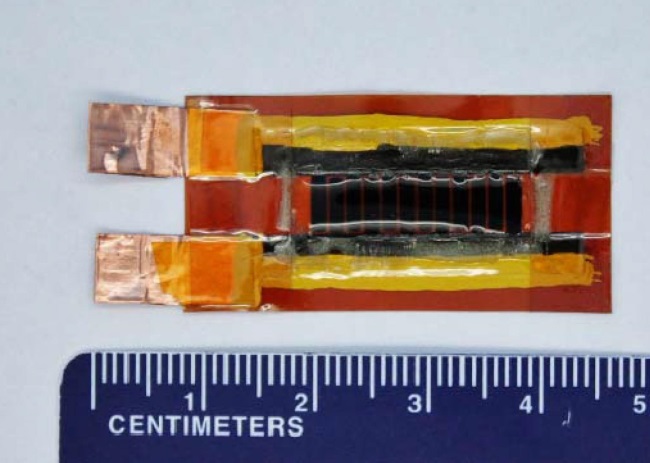Researchers at Rice University developed a solid-state micro-supercapacitor that they say rivals the best supercapacitors available for energy storage and delivery. The device is not a battery but is becoming similar to one as the technology improves. Traditional capacitors store energy and release it quickly (as in a camera flash), unlike common lithium-ion batteries that take a long time to charge and release their energy as needed.
The micro-supercapacitors developed by the Rice group charge 50 times faster than batteries, discharge more slowly than traditional capacitors, and match commercial supercapacitors for both the amount of energy stored and power delivered.
The devices are manufactured by burning electrode patterns with a commercial laser into plastic sheets in room-temperature air, eliminating the complex fabrication conditions that have limited the widespread application of micro-supercapacitors. The researchers see a path toward cost-effective, roll-to-roll manufacturing.
Unlike supercaps that take several lithographic steps, these micro-supercaps are made in minutes by burning the patterns, adding electrolytes, and covering the devices. The researchers say the capacitance and energy density rival commercial thin-film batteries and provide a power density two orders of magnitude higher than batteries, while displaying long life and mechanical stability.

Micro-supercaps are made in minutes by burning the patterns, adding electrolytes, and covering them.
Their energy density is due to the nature of laser-induced graphene (LIG). The research group discovered last year that heating a commercial polyimide plastic sheet with a laser burned everything but the carbon from the top layer, leaving a form of graphene. But rather than a flat sheet of hexagonal rings of atoms, the laser left a spongy array of graphene flakes attached to the polyimide, with high surface area.

Heating a commercial polyimide plastic sheet with a laser burned everything but the carbon from the top layer, leaving a form of graphene.
The researchers treated their LIG patterns with manganese dioxide, ferric oxyhydroxide, or polyaniline through electrodeposition and turned the resulting composites into positive and negative electrodes. The composites could then be formed into solid-state micro-supercapacitors with no need for current collectors, binders, or separators.
The day is coming when supercapacitors will replace batteries entirely, as energy storage systems will charge in minutes rather than hours. The Rice University researchers are not quite there yet, but are getting close. Another interesting point is that these micro-supercapacitors are just plastic. For more information, go to: http://tinyurl.com/h4yuwb6.
Advertisement





